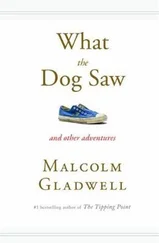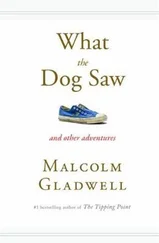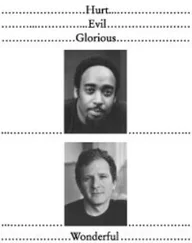Malcolm Gladwell - The Tipping Point
Здесь есть возможность читать онлайн «Malcolm Gladwell - The Tipping Point» весь текст электронной книги совершенно бесплатно (целиком полную версию без сокращений). В некоторых случаях можно слушать аудио, скачать через торрент в формате fb2 и присутствует краткое содержание. Город: Boston, New York, London, Год выпуска: 2000, ISBN: 2000, Издательство: LITTLE, BROWN AND COMPANY, Жанр: Культурология, Психология, на английском языке. Описание произведения, (предисловие) а так же отзывы посетителей доступны на портале библиотеки ЛибКат.
- Название:The Tipping Point
- Автор:
- Издательство:LITTLE, BROWN AND COMPANY
- Жанр:
- Год:2000
- Город:Boston, New York, London
- ISBN:0-316-31696-2
- Рейтинг книги:3 / 5. Голосов: 1
-
Избранное:Добавить в избранное
- Отзывы:
-
Ваша оценка:
- 60
- 1
- 2
- 3
- 4
- 5
The Tipping Point: краткое содержание, описание и аннотация
Предлагаем к чтению аннотацию, описание, краткое содержание или предисловие (зависит от того, что написал сам автор книги «The Tipping Point»). Если вы не нашли необходимую информацию о книге — напишите в комментариях, мы постараемся отыскать её.
The Tipping Point — читать онлайн бесплатно полную книгу (весь текст) целиком
Ниже представлен текст книги, разбитый по страницам. Система сохранения места последней прочитанной страницы, позволяет с удобством читать онлайн бесплатно книгу «The Tipping Point», без необходимости каждый раз заново искать на чём Вы остановились. Поставьте закладку, и сможете в любой момент перейти на страницу, на которой закончили чтение.
Интервал:
Закладка:
That phrase is now so familiar that it is easy to lose sight of how surprising Milgram's findings were. Most of us don't have particularly broad and diverse groups of friends. In one well-known study, a group of psychologists asked people living in the Dyckman public housing project in northern Manhattan to name their closest friend in the project; 88 percent of the friends lived in the same building, and half lived on the same floor. In general, people chose friends of similar age and race. But if the friend lived down the hall, then age and race became a lot less important. Proximity overpowered similarity. Another study, done on students at the University of Utah, found that if you ask someone why he is friendly with someone else, he'll say it is because he and his friend share similar attitudes. But if you actually quiz the two of them on their attitudes, you'll find out that what they actually share is similar activities. We're friends with the people we do things with, as much as we are with the people we resemble. We don't seek out friends, in other words. We associate with the people who occupy the same small, physical spaces that we do. People in Omaha are not, as a rule, friends with people who live halfway across the country in Sharon, Massachusetts. "When I asked an intelligent friend of mine how many steps he thought it would take, he estimated that it would require 100 intermediate persons or more to move from Nebraska to Sharon," Milgram wrote, at the time. "Many people make somewhat similar estimates, and are surprised to learn that only five intermediaries will — on average — suffice. Somehow it does not accord with intuition." How did the packet get to Sharon in just five steps?
The answer is that in the six degrees of separation, not all degrees are equal. When Milgram analyzed his experiment, for example, he found that many of the chains from Omaha to Sharon followed the same asymmetrical pattern. Twenty-four letters reached the stockbroker at his home in Sharon, and of those, sixteen were given to him by the same person, a clothing merchant Milgram calls Mr. Jacobs. The balance of letters came to the stockbroker at his office, and of those the majority came through two other men, whom Milgram calls Mr. Brown and Mr. Jones. In all, half of the responses that came back to the stockbroker were delivered to him by these same three people. Think of it. Dozens of people, chosen at random from a large Midwestern city, send out letters independently. Some go through college acquaintances. Some send their letters to relatives. Some send them to old workmates. Everyone has a different strategy. Yet in the end, when all of those separate and idiosyncratic chains were completed, half of those letters ended up in the hands of Jacobs, Jones, and Brown. Six degrees of separation doesn't mean that everyone is linked to everyone else in just six steps. It means that a very small number of people are linked to everyone else in a few steps, and the rest of us are linked to the world through those special few.
There is an easy way to explore this idea. Suppose that you made a list of the forty people whom you would call your circle of friends (not including family and co-workers) and in each case worked backward until you could identify the person who is ultimately responsible for setting in motion the series of connections that led to that friendship. My oldest friend, Bruce, for example, I met in first grade, so I'm the responsible party. That's easy. I met my friend Nigel because he lived down the hall in college from my friend Tom, whom I met because in freshman year he invited me to play touch football. Tom is responsible for Nigel. Once you've made all of the connections, the strange thing is that you will find the same names coming up again and again. I have a friend named Amy, whom I met when her friend Katie brought her to a restaurant where I was having dinner one night. I know Katie because she is the best friend of my friend Larissa, whom I know because I was told to look her up by a mutual friend of both of ours — Mike A. — whom I know because he went to school with another friend of mine — Mike H. — who used to work at a political weekly with my friend Jacob. No Jacob, no Amy. Similarly, I met my friend Sarah S. at my birthday party a year ago, because she was there with a writer named David who was there at the invitation of his agent, Tina, whom I met through my friend Leslie, whom I know because her sister, Nina, is a friend of my friend Ann's, whom I met through my old roommate Maura, who was my roommate because she worked with a writer named Sarah L., who was a college friend of my friend Jacob's. No Jacob, no Sarah S. In fact, when I go down my list of forty friends, thirty of them, in one way or another, lead hack to Jacob. My social circle is, in reality, not a circle. It is a pyramid. And at the top of the pyramid is a single person — Jacob — who is responsible for an overwhelming majority of the relationships that constitute my life. Not only is my social circle not a circle, but it's not "mine" either. It belongs to Jacob. It's more like a club that he invited me to join. These people who link us up with the world, who bridge Omaha and Sharon, who introduce us to our social circles — these people on whom we rely more heavily than we realize — are Connectors, people with a special gift for bringing the world together.
What makes someone a Connector? The first — and most obvious — criterion is that Connectors know lots of people. They are the kinds of people who know everyone. All of us know someone like this. But I don't think that we spend a lot of time thinking about the importance of these kinds of people. I'm not even sure that most of us really believe that the kind of person who knows everyone really knows everyone. But they do. There is a simple way to show this. In the paragraph below is a list of around 250 surnames, all taken at random from the Manhattan phonebook. Go down the list and give yourself a point every time you see a surname that is shared by someone you know. (The definition of "know" here is very broad. For example, if you sat down next to that person on a train, you would know their name if they introduced themselves to you and they would know your name.) Multiple names count. If the name is Johnson, in other words, and you know three Johnsons, you get three points. The idea is that your score on this test should roughly represent how social you are. It's a simple way of estimating how many friends and acquaintances you have.
Algazi, Alvarez, Alpsrn, Ametrano, Andrews, Aran, Arnstein, Ashford, Bailey, Bailout, Bamberger, Baptists, Barr, Barrows, Baskerville, Bassiri, Bell, Bokgese, Brandao. Bravo, Brooke, Brightman, Billy, Blau, Bohen, Bohn, Borsuk, Brendle, Butler, Calle, Cantwell, Carrel!, Chinlund, Cirker, Cohen, Collas, Couch, Callegher, Calcaterra, Cook, Carey, Cassel, Chen, Chung, Clarke, Cohn, Carton, Crowley, Curbelo. Dellamanna, Diaz, Dirar, Duncan, Dagostino, Delakas, Dillon, Donaghey, Daly. Dawson, Edery, Ellis, Elliott, Eastman, Easton, Famous, Fermin, Fialco, Finklestein, Farber, Falkin, Feinman, Friedman, Gardner, Gelpi, Glascock, Grandfield, Greenbaum, Greenwood, Gruber, Garil, Goff, Gladwell, Greenup, Gannon, Ganshaw, Garcia, Gennis, Gerard, Gericke, Gilbert, Glassman, Glazer, Gomendio, Gonzalez, Greenstein, Guglielmo, Gurman, Ilaberkorn, Hoskins, Hussein, Hamm, Mardwick, Harrell, Hauptman, Hawkins, Henderson, Flayman, Hibara, Hehmann, Herbst, Hedges, Hogan, Hoffman, Horowitz, Hsu, Huber, Ikiz, Jarosehy, Johann, Jacobs, Jara, Johnson, Kassel, Keegan, Kuroda, Kavanau, Keller, Kevill, Kiew, Kimbrough, Kline, Kossoff, Kotzitzky, Kahn, Kiesler, Kosser, Korte, Leibowitz, Lin, Liu, Lowrance, Lundh, Laux, Leifer, Leung, Levine, Leiw, Lockwood, Logrono, Lohnes, Lowet, Laber, Leonardi, Marten, McLean, Michaels, Miranda, Moy, Marin, Muir, Murphy, Marodon, Matos, Mendoza, Muraki, Neck, Needham, Noboa, Null, O'Flynn, O'Neill, Orlowski, Perkins, Pieper, Pierre, Pons, Pruska, Paulino, Popper, Potter, Purpura, Palma, Perez, Portocarrero, Punwasi, Rader, Rankin, Ray, Reyes, Richardson, Ritier, Roos, Rose, Rosenfeld, Roth, Rutherford, Rustin, Ramos, Regan, Reisman, Renkert, Roberts, Rowan, Rene, Rosario, Rothbart, Saperstein, Schoenbrod, Schwod, Sears, Staiosky, Sutphen, Sheehy, Silverton, Silverman, Silverstein, Sklar, Sioikin, Speros, Stollman, Sadowski, Schles, Shapiro, Sigdel, Snow, Spencer, Sieinkol, Stewart, Stires, Stopnik, Stonehill, Tayss, Tilney, Temple, Torfield, Townsend, Trimpin, Turchin, Villa, Vasillov, Voda, Waring, Weber, Weinstein, Wang, Wegimont, Weed, Weishaus.
Читать дальшеИнтервал:
Закладка:
Похожие книги на «The Tipping Point»
Представляем Вашему вниманию похожие книги на «The Tipping Point» списком для выбора. Мы отобрали схожую по названию и смыслу литературу в надежде предоставить читателям больше вариантов отыскать новые, интересные, ещё непрочитанные произведения.
Обсуждение, отзывы о книге «The Tipping Point» и просто собственные мнения читателей. Оставьте ваши комментарии, напишите, что Вы думаете о произведении, его смысле или главных героях. Укажите что конкретно понравилось, а что нет, и почему Вы так считаете.










